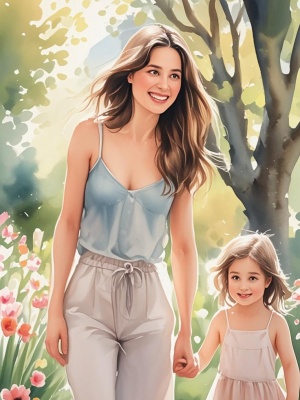Make Your Own Watercolors: A Complete Guide for Artists
Introduction
Creating your own watercolors is a rewarding process that allows artists to customize colors, textures, and formulations to suit their unique style. Whether you're looking to save money, experiment with pigments, or create eco-friendly paints, making watercolors at home offers numerous benefits. This guide will walk you through the essential steps, materials, and techniques to craft professional-quality watercolors in your studio.
Essential Materials for Homemade Watercolors
Core Ingredients
To make your own watercolors, you'll need three primary components:
- Pigments (mineral or synthetic)
- Binder (typically gum arabic)
- Additives (honey, glycerin, or preservatives)
Recommended Tools
- Glass muller for grinding pigments
- Non-porous mixing surface
- Precision scale
- Small containers for storage
For beginners, starting with a basic AI painting guide can help understand color theory before diving into pigment creation.
Step-by-Step Watercolor Creation Process
1. Preparing Pigments
Begin by selecting high-quality pigments. Earth pigments like ochres and umbers work well for beginners, while synthetic pigments offer brighter colors. Grind dry pigments into fine powder using a mortar and pestle before mixing.
2. Creating the Binder Solution
Mix 1 part gum arabic with 2 parts distilled water. Add 1-2 drops of honey per 10ml solution for improved rewetting properties. For extended shelf life, consider adding a preservative like clove oil.
3. Combining Ingredients
Slowly add binder solution to your pigment while grinding with a glass muller. Aim for a thick paste consistency similar to toothpaste. Test the color by painting a swatch on watercolor paper.
Problem-Solution Matrix
Common challenges when making your own watercolors and how to solve them:
- Problem: Paint cracks when drying
Solution: Increase glycerin content (5-10% of binder volume) - Problem: Colors appear dull
Solution: Use finer pigment grind or higher pigment concentration - Problem: Mold growth
Solution: Add 1% phenol solution as preservative
Advanced Techniques and Customization
Once you've mastered basic watercolor making, experiment with:

- Creating granulating effects with coarser pigments
- Developing unique color blends inspired by landscape scenes
- Incorporating metallic or interference pigments
For inspiration on color combinations, explore our gallery of digital artworks that demonstrate effective color harmonies.
Conclusion
Making your own watercolors is an enriching process that deepens your understanding of painting materials while giving you complete control over your palette. While the initial setup requires investment in tools and materials, the long-term benefits of customized, high-quality paints make it worthwhile for serious artists. Remember that perfecting your formula takes practice - document each batch's ratios and results to refine your technique over time.
For artists interested in both traditional and digital techniques, our AI art guide offers complementary insights into modern creative tools.